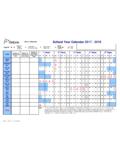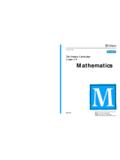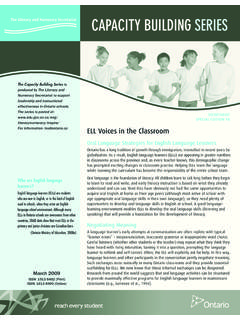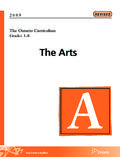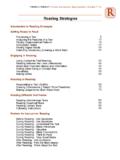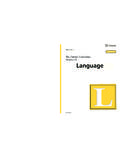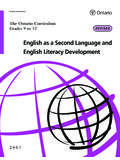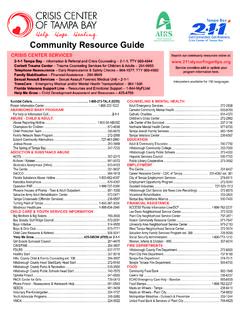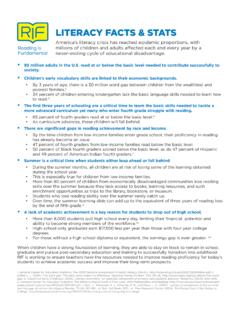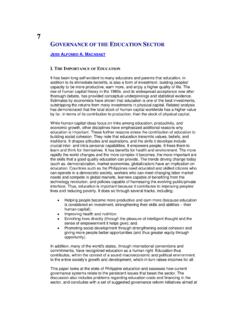Transcription of Supporting English Language Learners in Kindergarten
1 Supporting English Language Learners lier. in Kindergarten A practical guide for Ontario educators Table of Contents Introduction 3. 1 Who are English Language Learners in Kindergarten ? 5. 2 Working with families and communities 17. 3 Working with English Language Learners in Kindergarten 33. 4 Working as a whole school 69. Resources 75. Introduction Martina is 5 years old. She has just come to Canada with her grandmother, to join her mother and two older brothers. Martina and her family speak Czech at home. Martina is usually at home with her grandmother while her mother is at work. She loves to listen to her grandmother tell stories of what her life was like as a child.
2 Shivam is also 5 years old and was born in Ontario. He lives with his parents and his sister, who is in Grade 3. The family speaks Punjabi in the home and maintains close ties with their cultural community. Shivam and Martina are eager and excited to start Kindergarten . However, they are both worried that they won't always understand the teacher and they won't have any friends. Martina and Shivam are only two of many children from diverse linguistic and cultural backgrounds born overseas or here in Canada who are beginning Kindergarten . For all children, starting Kindergarten is a time of major transition for both the children and their families.
3 For children like Martina and Shivam, beginning school is not only about adjusting to school and its routines, but also about doing so in a largely unfamiliar Language . Kindergarten teachers are asking how best to meet the needs of these English Language Learners (ELLs) both those born in Canada and those arriving from other countries. What can we do in our classrooms to create an environment in which children of varied cultures and languages thrive and grow? How can we increase our own knowledge, awareness, and teaching practice to appropriately support the children's ongoing learning needs? How can we value and respect the experiences of all children?
4 This document is a resource and tool for teachers, administrators, and other school staff as they support ELLs in achieving the overall expectations of the Kindergarten program. It will help them provide a quality beginning school experience for ELLs. In preparing this resource, the Ministry of Education acknowledges the valuable work being done in schools and classrooms across Ontario, and the dedication of teachers throughout the province in creating an inclusive learning environment that supports the success of every student. In this document, parent(s) is used to mean parent(s) and guardian(s). 1. Who are English Language Learners in Kindergarten ?
5 The Kindergarten Program, 2006 (Revised) affirms that early learning experiences have a profound effect on development (p. 1) and that children develop their knowledge by building on their past experiences and the learning they have already acquired (p. 2). These points apply equally to ELLs. It may be challenging for the teacher to get to know what those past experiences/learning have been and what they continue to be within the children's homes and communities. The importance of building on children's prior experiences/learning cannot be overestimated since their identities are involved. The differences that [ELL] children bring to classrooms are not simply individual differences or idiosyncrasies.
6 They are far too patterned to be written off as individual differences. They are products and constructions of the complex and diverse social learnings from the cultures where children grow, live and interact. These cultures are not just traditional cultures we affiliate with ethnic groups or national origins, but they are best described in terms of the community cultures and sub-cultures where children are socialized. These too are dynamic and hybrid mixing, matching and blending traditional values and beliefs, children rearing practices and literacy events with those of new, post-modern popular cultures.
7 Eve Gregory, ed., One Child, Many Worlds (New York: Teachers College Press, 1997). Definition of English Language Learners English Language Learners are students in provincially funded English Language schools whose first Language is a Language other than English , or is a variety of English1 that is significantly different from the variety used for instruction in Ontario's schools, and who may require focused educational supports to assist them in attaining proficiency in English . These students may be Canadian-born or recently arrived from other countries. They come from diverse backgrounds and school experiences, and have a wide variety of strengths and needs.
8 Canadian-born English Language Learners Many English Language Learners were born in Canada and raised in families or communities in which languages other than English are spoken. They may include, for example: Aboriginal students whose first Language is a Language other than English ; 2. children who were born in communities that have maintained a distinct cultural and linguistic tradition, who have a first Language that is not English , and who attend English Language schools; 3 and children who were born in immigrant communities in which languages other than English are primarily spoken. 1. English is an international Language , and many varieties of English sometimes referred to as dialects are spoken around the world.
9 Standard English is the variety of English that is used as the Language of education, law, and government in English -speaking countries. Some varieties of English are very different not only in pronunciation or accent but also in vocabulary and sentence structure from the English required for success in Ontario schools. Some varieties are so different from standard English that many linguists consider them to be languages in their own right. 2. The Ministry of Education is dedicated to excellence in public education for all students, including First Nation, M tis, and Inuit students. The document Ontario First Nation, M tis, and Inuit Education Policy Framework, 2007 provides the strategic policy context within which the Ministry of Education, school boards, and schools will work together to improve the academic achievement of First Nation, M tis, and Inuit students.
10 The framework has two components: targeted strategies and supports for First Nation, M tis, and Inuit students; and strategies to increase knowledge and awareness of Aboriginal histories, cultures, and perspectives among all students, teachers, and school board staff. In order to achieve these goals, a holistic approach integrating the framework strategies throughout all programs, services, and initiatives is necessary. 3. Section 23 of the Canadian Charter of Rights and Freedoms defines the right of Canadian citizens of the English - speaking or French-speaking minority of a province to educate their children in that minority Language , wherever numbers warrant.
